The mangled – but not rusted – metal object pictured above has sat on one of the world’s most “desolate” beaches since shortly after 29 January 1943.
It is an engine cowling from a Lockheed Ventura bomber which plunged into the nearby Atlantic on that day, off Namibia’s Skeleton Coast.
A short distance inland – as you can see, above – is the western edge of the world’s oldest desert’s “sandsea”.
That Ventura, several other planes, a number of ships, and a land-based convoy’s extraordinarily arduous/audacious mission were all part of an amazing true story of shipwreck/s, a plane-crash, and herculean rescue efforts.
MV Dunedin Star’s demise resulted in far fewer deaths than did RMS Titanic’s, but the smaller vessel’s end-story is, arguably, the more “titanic”.
Carrying munitions and fare-paying civilians, Dunedin Star was en route from Liverpool to Egypt (via Cape Town) when it struck an “underwater obstacle”, just off northern Namibia’s Skeleton Coast, on the night of 29 November 1942.
The very rough waters were poorly charted, and the nearby shoreline was uninhabited, far distant from any roads or towns, and devoid of readily available fresh water.
Dry – very dry – land was within sight, but getting anyone/everyone off the ship was a hugely difficult, dangerous task; if achieved, the next daunting task would be “how to keep the survivors alive until a convoy of vehicles could reach them?” (if such a convoy could reach them)
For a short/dramatic/lurid account of what unfolded over the next several weeks, click here.
Click this for a more detailed, not-lurid one; the story is intrinsically dramatic, and has a great many aspects.
The best account I have read is within Peter Bridgeford’s history of Rocky Point.
If you only want to know about the Dunedin Star, I suggest you first have a look at the map on page two of Bridgeport’s history; it shows where the ship came to grief, where the tugboat Sir Charles Elliot ran aground on 03 December, after having played a crucial, heroic role in the rescue effort, and also where the relevant Ventura bomber plunged into the ocean, near Rocky Point on 29 January 1943.
(the only two lives directly lost in the whole saga were those of the tug’s First Officer and one deckhand)
Then, I suggest you starting reading at Bridgeport’s page 9 of 37 (from the heading “1940 Major Matthys Uys”) and continue through to page 13 of 37.
On the afternoon of 03 December 1942 a Ventura bomber (deployed as a coastal patrol aircraft) arrived, to drop supplies to keep alive those now (relatively) safe on the shore.
That morning the tug which had played a key role in getting survivors to shore, had grounded itself near Rocky Point, whilst attempting to return to Walvis Bay,
Walvis Bay was the only “nearby” port, more than six hundred kilometres south of the Dunedin Star.
The bomber was not meant to attempt to land, but on surveying the state of the shipwreck’s survivors, the pilot felt duty-bound to offer direct assistance.
The landing was “successful”, but the Ventura then sank into the salt pan.
There’s a whole lot more to the saga!
Suffice, here, that the land convoy from Windhoek did, eventually, manage to “get through”, after some fifteen days.
Other Venturas, meanwhile, kept people alive, but stayed aloft, and some survivors from both “wrecks” were transferred from shore to another vessel, which managed to stay afloat.
The land convoy’s return journey to Windhoek concluded on 23 December, its cargo of survivors than travelled by train to Cape Town, which they reached on 28 December 1942.
In 2023, there is a (“restricted access”) road along part of the Skeleton Coast, as you can see in the picture below.
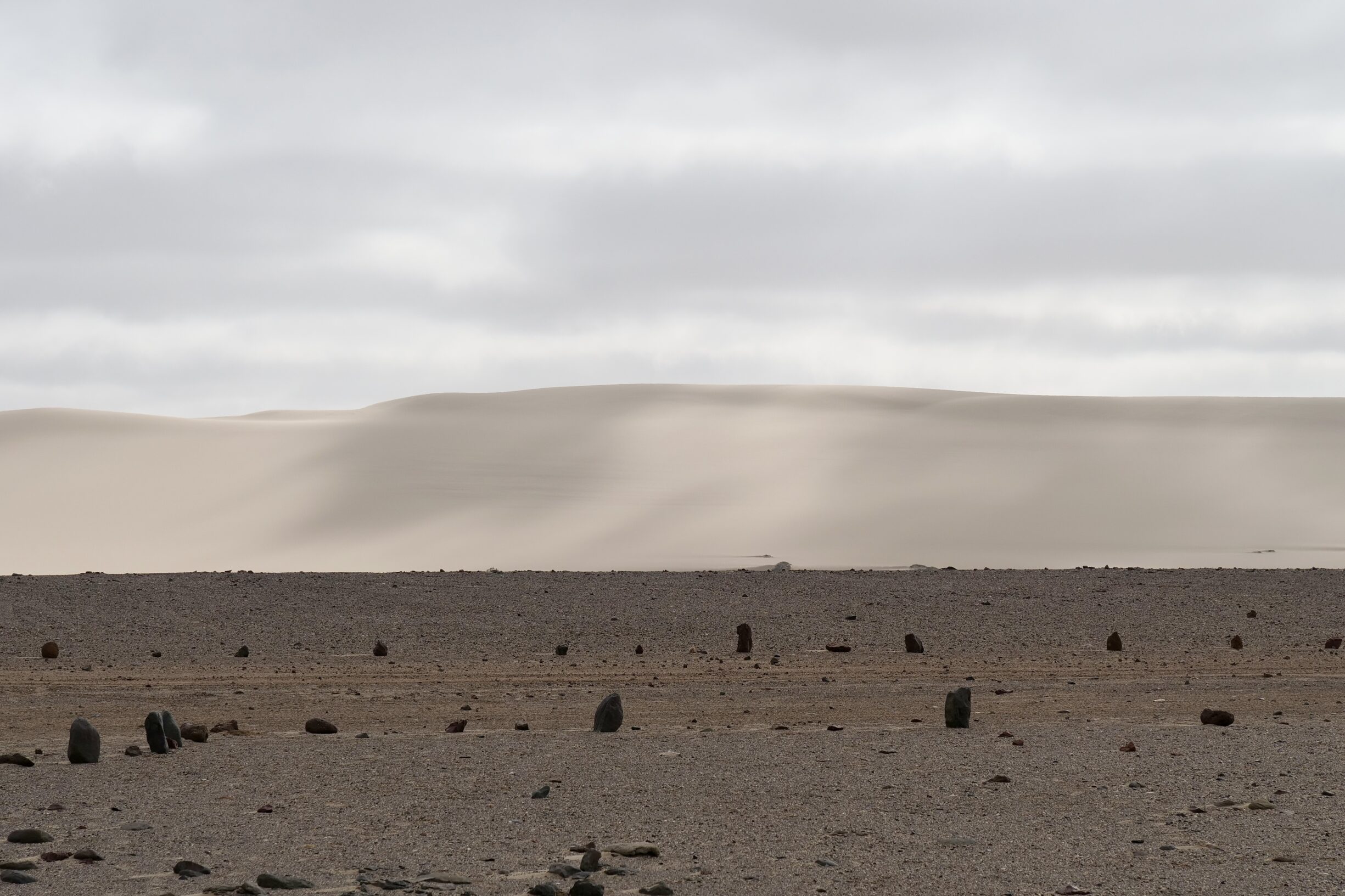
On 17 January 1943 another land convoy set off from Windhoek.
Its mission: to salvage the Ventura.
This was, apparently, successfully accomplished by 29 January.
Dug out, repaired, serviced, its engines tested, the bomber took off, and roared southward.
Not very many minutes’ flying time later, the starboard engine seized, and the Ventura plunged into the sea, where its engines fell out.
In 2023, the remains of one of those engines is gradually rusting away, just a few metres distant from the cowling.
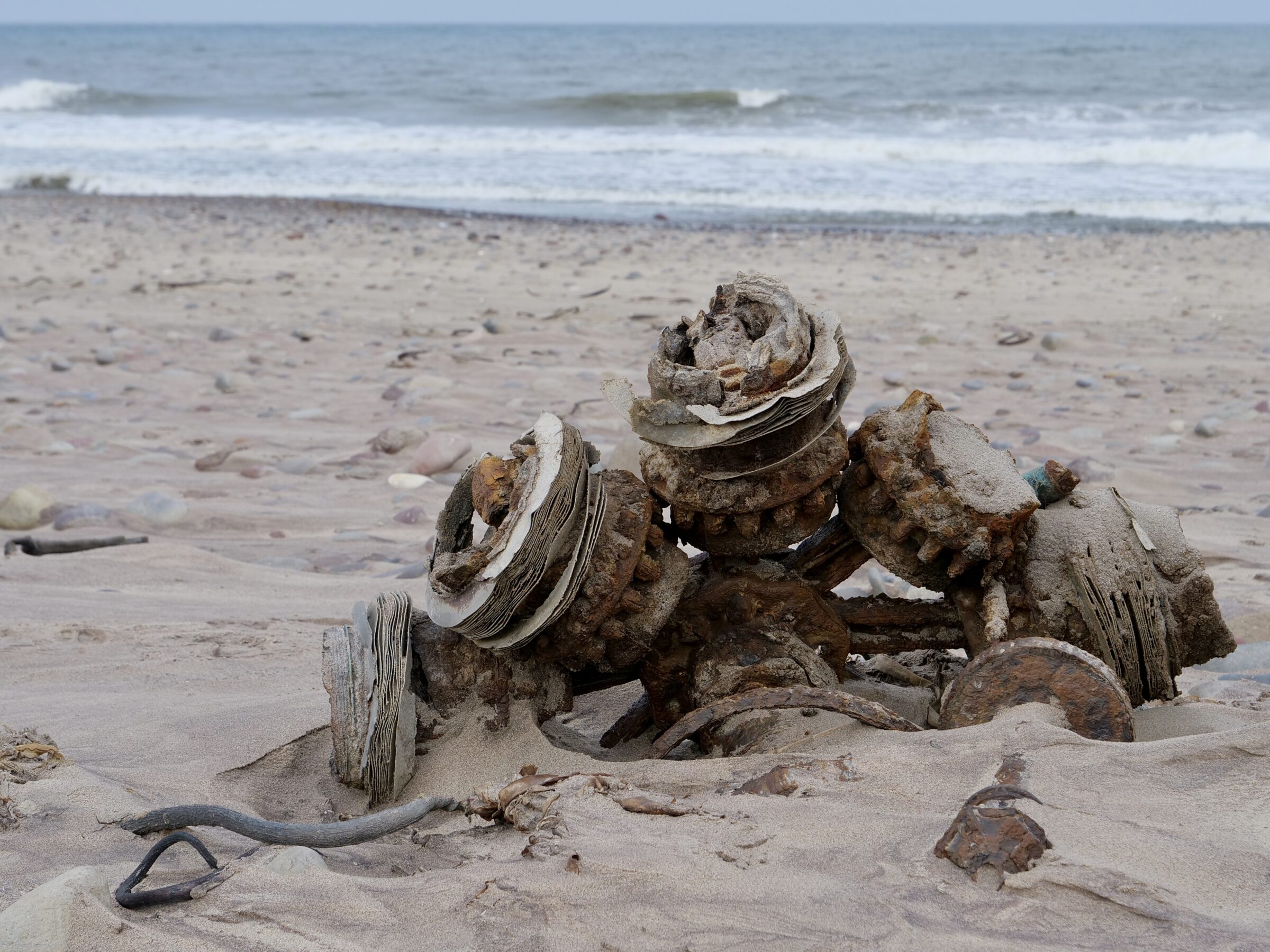
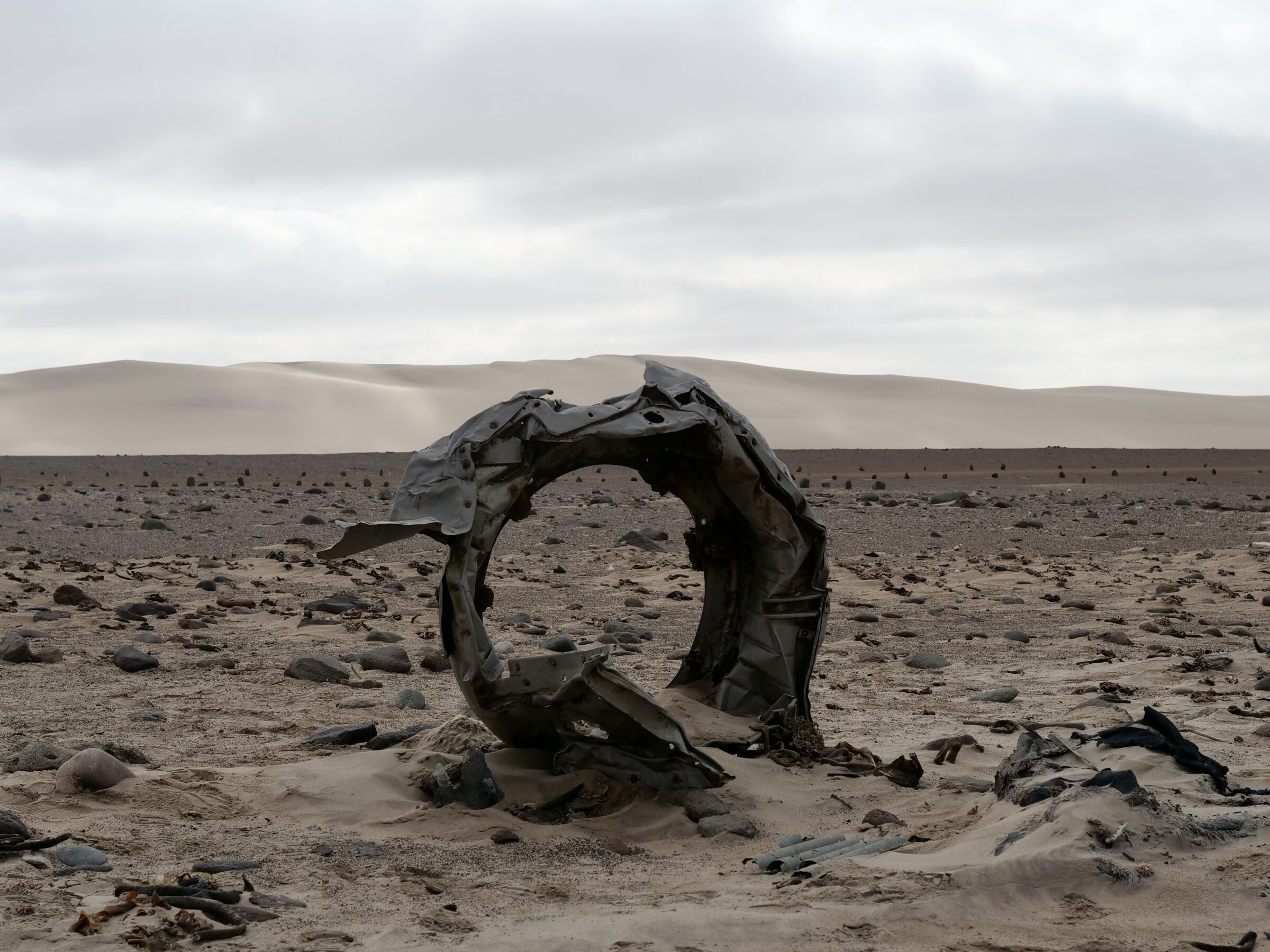
On January 29 1943, the engine-less fuselage floated to the surface, bearing three shocked aviators.
They were not badly injured and soon washed up onto the shoreline.
The aviators knew that their only real chance of survival was for at least one of them to reach the route of the now Windhoek-bound land convoy before it passed their latitude.
Happily, this was achieved, after a 50 kilometre walk; had the convoy taken an alternative return route, all three would have perished.
On 02 February, the convoy was much surprised, and the aviators were saved.
They then reached Windhoek very quickly, arriving on 05 February 1943.
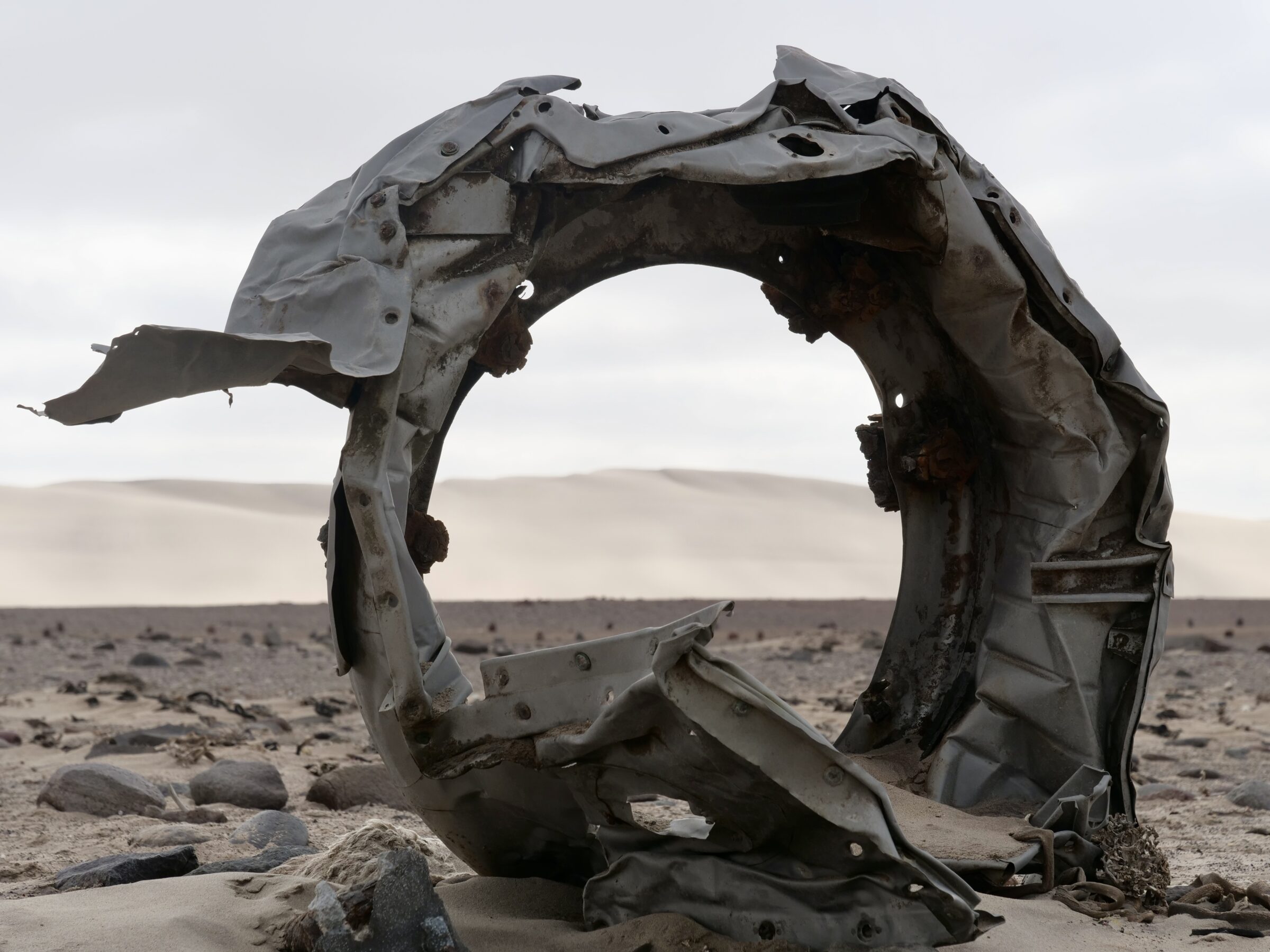
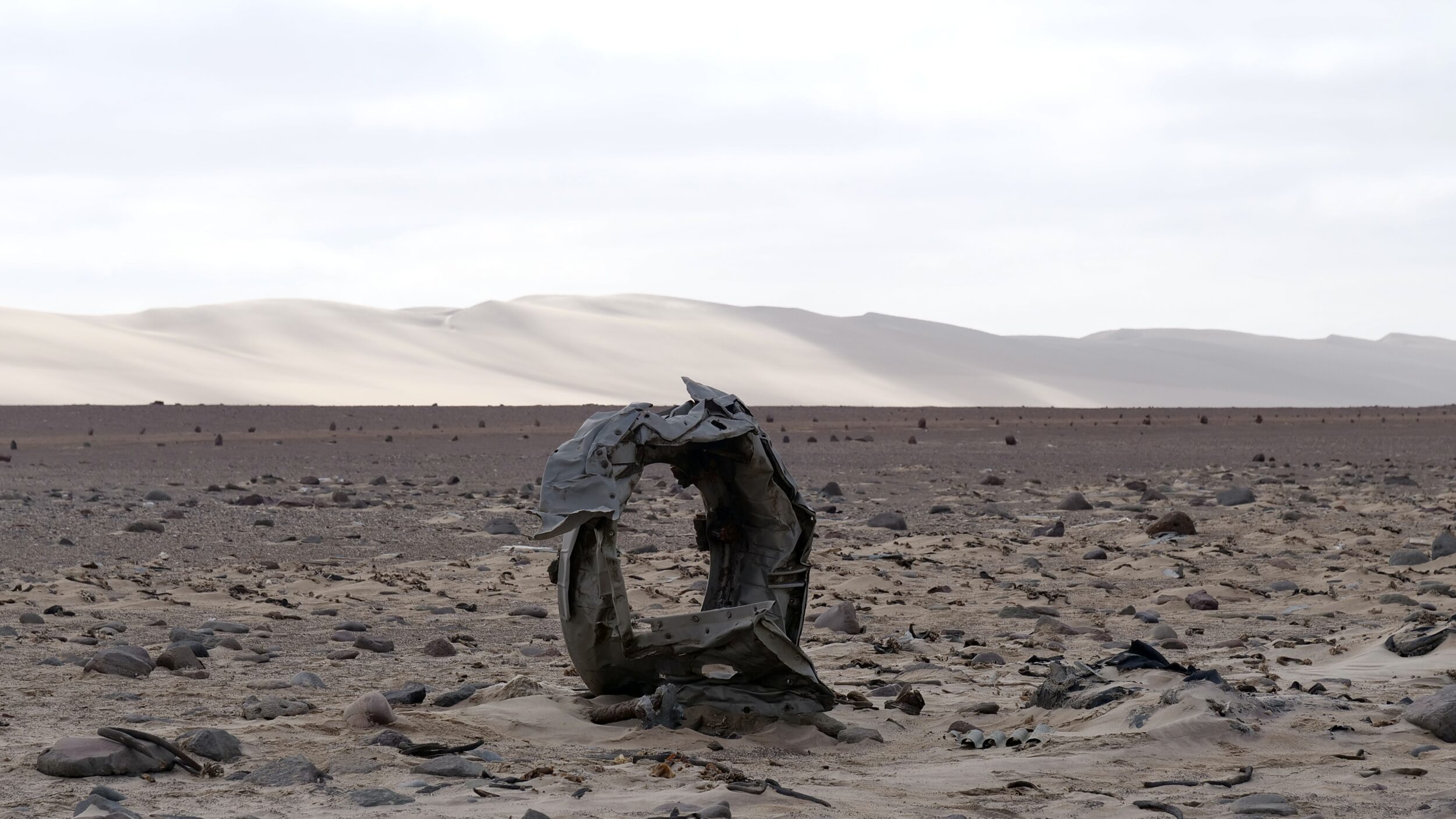
Hi and thanks again, Doug. I truly hope you are compiling all your posts for books. Your knowledge, research and incredible photography needs to be preserved. Please have your work captured for future generations. And thank you ! Hope to see you sometime and somewhere this year. Missing you.